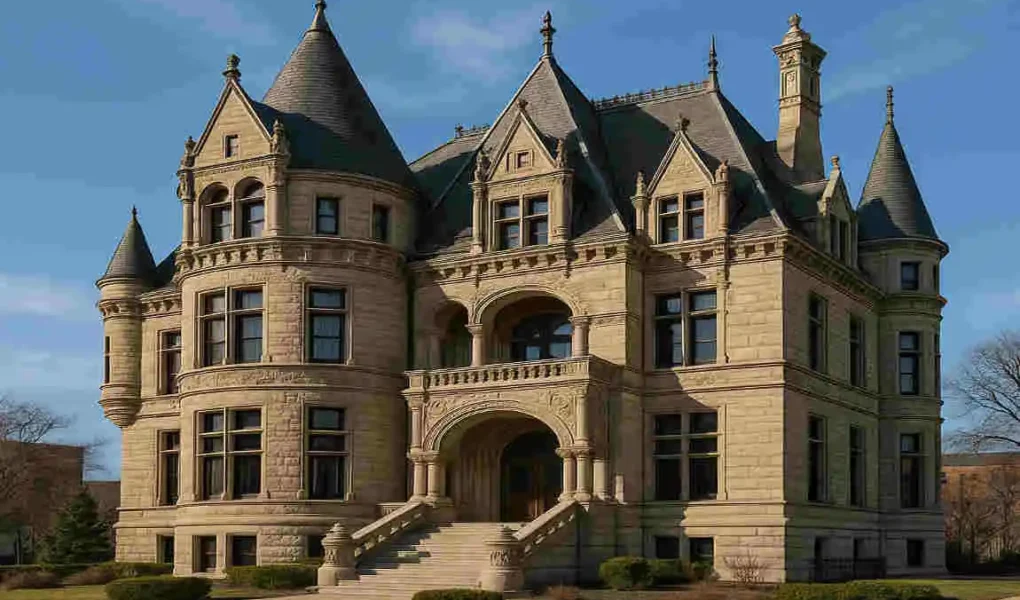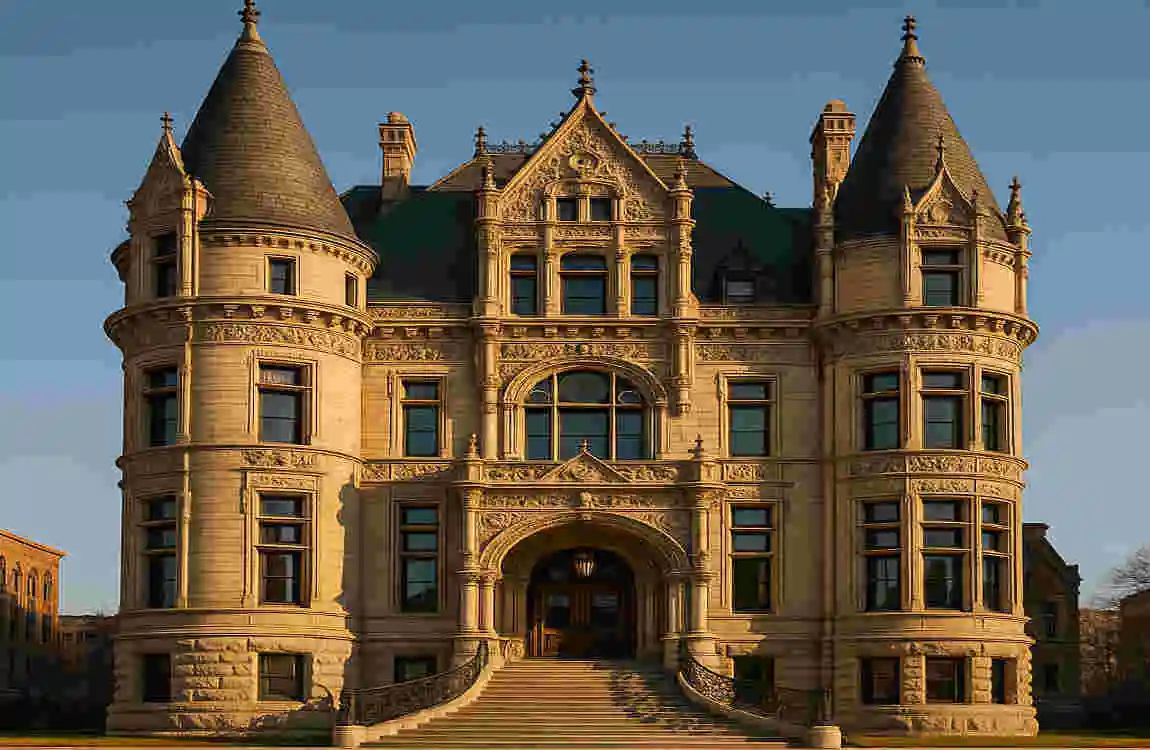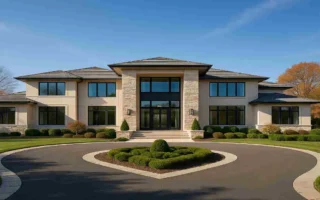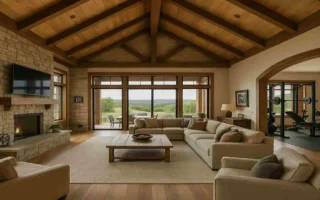Detroit is a city known for its rich history, industrial prowess, and stunning architecture. Among its many historic landmarks, the Col. Frank J. Hecker House stands out as a true gem. Perched on Woodward Avenue, this mansion is not just a beautiful building but a testament to Detroit’s Gilded Age grandeur. From its intricate Châteauesque architecture to its storied past, the Col. Frank J. Hecker House continues to captivate visitors, historians, and architecture enthusiasts alike.
By the end, you’ll understand why this mansion is one of Detroit’s most celebrated landmarks and a must-see for anyone interested in history or architecture.
The Legacy of Col. Frank J. Hecker
Who Was Col. Frank J. Hecker?
Col. Frank J. Hecker was a man of many talents and achievements. Born in 1846 in Freedom, Michigan, Hecker rose to prominence as a Civil War veteran, successful businessman, and influential public figure. During the Civil War, he served valiantly in the Union army, earning recognition for his leadership and dedication.
After the war, Hecker turned his attention to the railroads, which were the backbone of America’s rapid industrialization. He played a significant role in Detroit’s economic growth as a co-founder of the Peninsular Car Company. This business manufactured railcars and became one of the largest of its kind in the country. His influence extended beyond business, as he served in various public roles, including as a U.S. Commissioner to the Paris Exposition of 1900.
A Vision for Grandeur
Col. Hecker’s success allowed him to dream big, and he envisioned a home that would reflect his wealth, status, and love for French architecture. This vision culminated in the construction of his mansion—today known as the Col. Frank J. Hecker House. Built with no expense spared, the house was designed to be a monument to his achievements and a symbol of Detroit’s prosperity during the late 19th century.
Timeline and Architects
The Col. Frank J. Hecker House was constructed between 1888 and 1892, a period when Detroit was flourishing as an industrial giant. Hecker entrusted the design of his mansion to Louis Kamper, a renowned architect who had a flair for European-inspired designs. Kamper’s vision for the house was rooted in the French Châteauesque Style, a design language inspired by the grand châteaux of the Loire Valley in France.
You may also read (what makes audrey hepburns house in tolochenaz so special).
The Vision Behind the Mansion
Col. Hecker wanted his mansion to be nothing short of spectacular. The house spans an impressive 21,000 to 26,000 square feet and features 49 intricately designed rooms. The construction cost, though not precisely documented, was rumored to be exorbitant for its time, showcasing Hecker’s commitment to creating a masterpiece.
The mansion’s location on Woodward Avenue, one of Detroit’s most prominent streets, further amplified its presence. At a time when Detroit’s elite were building grand homes along this corridor, the Hecker House stood out as a beacon of elegance and sophistication.
Châteauesque Grandeur: Architectural Features and Influence
What Is Châteauesque Style?
The Châteauesque Style, popular in the late 19th century, is inspired by the French Renaissance châteaux, such as the Château de Chenonceaux. Known for its opulent and romantic designs, this Style features steeply pitched roofs, towers, turrets, and intricate stonework. The Col. Frank J. Hecker House perfectly embodies these characteristics.
Exterior Highlights
The exterior of the mansion is a feast for the eyes. Its limestone façade lends it an air of permanence and elegance. Distinctive features include:
- Towers and turrets, which give the house a castle-like appearance.
- A steeply pitched hip roof adorned with dormers.
- A porte-cochère is an elaborate covered driveway that adds both function and flair.
- Stained glass windows, which add a touch of artistry to the mansion’s grandeur.
Unique Features
Beyond its architectural beauty, the mansion boasted practical elements, like a carriage house that complemented its design. The original landscaping further enhanced the mansion’s majestic appeal, making it a true showpiece in its heyday.
Ornate Interiors: Luxury, Craftsmanship, and Artistic Flourishes
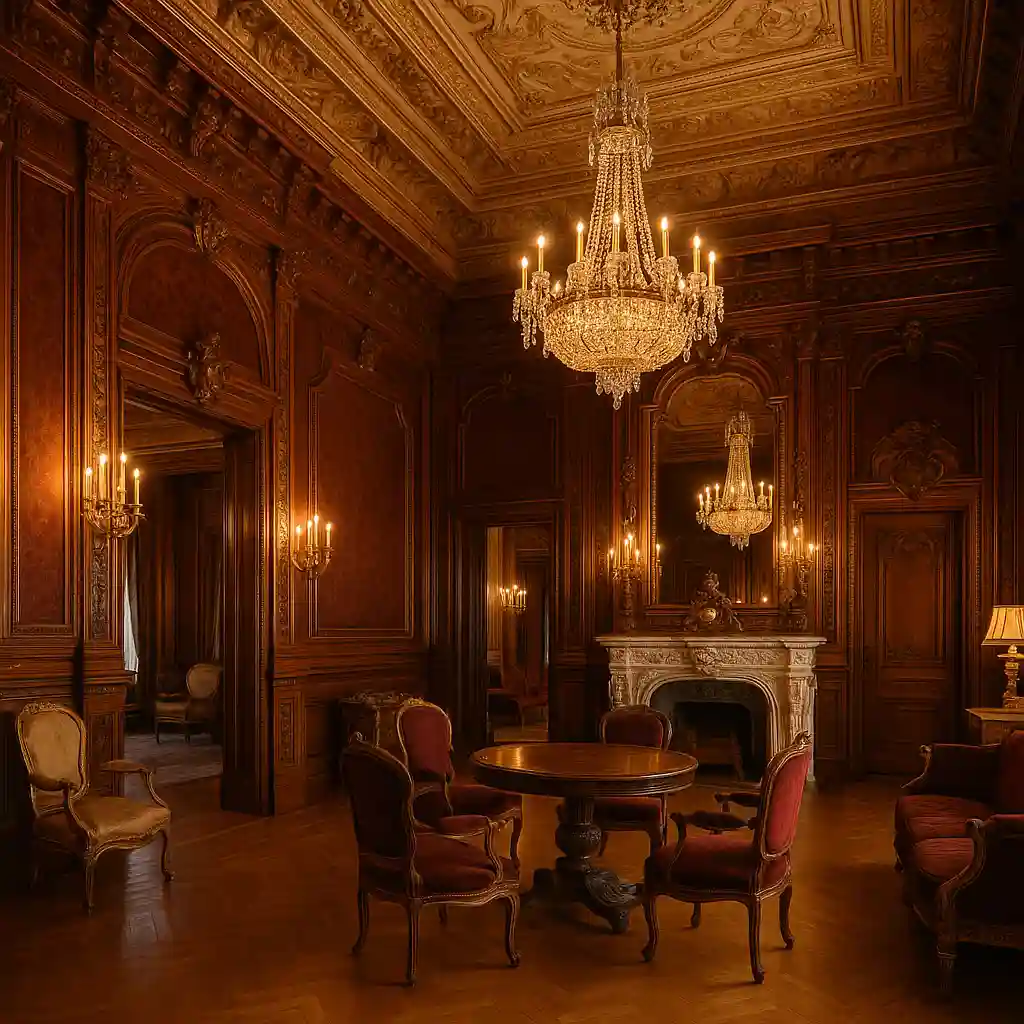
A Peek Inside the Mansion
Stepping inside the Col. Frank J. Hecker House is like traveling back to the Gilded Age. The mansion’s 49 rooms were thoughtfully designed to reflect both luxury and functionality. Among the standout spaces are:
You may also read (what features will define tana mongeaus 2025 house lifestyle).
- The grand oak-paneled hall, which greets visitors with its warm tones and intricate carvings.
- The Rococo music room is designed for entertainment and adorned with delicate details.
- The oval dining room showcases elegance in every corner.
Rare and Imported Materials
The interiors of the mansion feature imported materials that speak to Hecker’s commitment to excellence. For example:
- Siena marble and Nubian marble were used to create stunning fireplaces and decorative elements.
- English oak paneling adds richness and depth to the rooms.
Art and Furnishings
The mansion is rumored to have housed works by famous artists, including James Abbott McNeill Whistler, though much of its original art collection has been lost to time. Nevertheless, the furnishings and decorative elements that remain offer a glimpse into the opulence of Hecker’s era.
Cultural and Social Hub: Notable Guests, Events, and Entertaining
High-Society Gatherings
The Col. Frank J. Hecker House was more than just a home—it was a hub for Detroit’s elite. The mansion hosted grand parties and events, attracting notable guests like U.S. presidents and other prominent figures.
Impact on the Arts and Music
The mansion’s 200-seat concert hall, located in the carriage house, became a vital space for Detroit’s music community. This venue contributed to the city’s cultural scene by hosting recitals, concerts, and other artistic events.
Changes Over Time: Preservation Through the Decades
From Family Home to Boarding House
After Hecker’s death, the mansion underwent various transformations. It served as a boarding house for students, and later, it became the property of the Smiley Brothers Music Company, which used it as a venue for music education.
Restoration Efforts
In the 1990s, the mansion was purchased by the law firm Charfoos & Christensen, PC, which initiated restoration efforts to preserve its historic character. These efforts ensured that the mansion retained its charm and architectural integrity.
Modern Era: Wayne State University and Continued Legacy
Acquisition by Wayne State University
In 2014, Wayne State University acquired the mansion, renaming it the Tierney Alumni House. Today, the building serves as a space for alum relations while continuing to be a symbol of Detroit’s rich history.
Current Use and Access
The Col. Frank J. Hecker House is used for university events and has limited public access, ensuring its preservation while allowing people to appreciate its beauty.
Why the Col. Frank J. Hecker House Remains Unmatched in Detroit
A Unique Architectural Marvel
Among Detroit’s historic mansions, the Col. Frank J. Hecker House remains unmatched for its Châteauesque Style, scale, and craftsmanship. It is a rare example of this type of architecture in the city.
A Symbol of Prosperity
The mansion stands as a reminder of Detroit’s Gilded Age prosperity, representing the wealth and ambition of the city’s industrial pioneers.
Tips for Visitors and Appreciation
If you’re planning to explore Detroit’s historic landmarks, be sure to include the Col. Frank J. Hecker House. Here are a few tips:
- Best Photography Spots: The mansion’s exterior is perfect for photos, especially its towers and porte-cochère.
- Tours of Detroit Mansions: Look for architecture tours that include the Hecker House.
- Support Preservation: Consider donating to local preservation efforts to protect Detroit’s historic gems.
Conclusion
The Col. Frank J. Hecker House is more than just a mansion—it’s a piece of Detroit’s history, an architectural masterpiece, and a cultural landmark. Its story reflects the ambition and success of one of Detroit’s most influential figures and the city’s journey through the Gilded Age. By preserving and appreciating this historic home, we keep Detroit’s vibrant history alive for future generations.
You may also read (why did michael phelps list his arizona home for 4 125 million).

